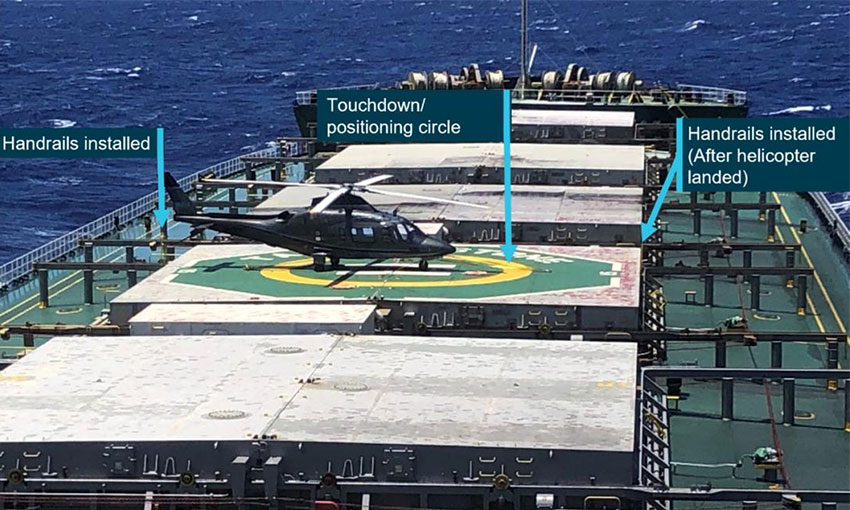AN INVESTIGATION has found the crew of a bulker was using an outdated helicopter operations checklist when a helicopter was damaged during a marine pilot transfer last year.
The Australian Transport Safety Bureau, in a report released on Wednesday (24 April), found a handrail on the bulk carrier had not been removed prior to the tail rotor collision.
The investigation report details that an Agusta A109 helicopter was conducting marine pilot transfer operations to the bulk carrier Tai Keystone, which was about 240 kilometres north-east of Mackay, Queensland, on 6 December 2023.
As the helicopter’s wheels touched down on the ship’s helicopter landing site, the tail rotor struck an upright handrail that was not identified by the pilot during approach.
The pilot reported hearing a shredding noise and an increase in the engine pitch before completing the emergency shutdown procedure.
The helicopter sustained substantial damage and was secured to the deck of the Tai Keystone, which then returned to Hay Point to allow the helicopter to be recovered.
ATSB found the ship’s crew was using an older version of the vessel’s helicopter operations checklist, which did not require the removal of the handrail, and the handrail was not removed during preparation of the landing site.
The bureau also noted the handrail was not painted in a colour that contrasted with the ship’s deck, which did not align with international guidance.
The helicopter was also not positioned correctly during the landing, resulting in its tail rotor being outside the obstacle free zone.
“It is the responsibility of the pilot in command to ensure that a landing area is safe, but likewise, vessel operators should ensure their procedures and landing areas on ships are aligned with the relevant guidance material,” ATSB director transport safety Stuart Macleod said.
“To best aid pilots, objects that present a threat to a landing helicopter that are retractable, collapsible or removable should be painted in an appropriate colour to ensure they are visible if forgotten or missed.”
Since the accident, the ship’s operator has updated the relevant checklist, according to ATSB, and the helicopter operator has amended its procedures to ensure helicopter pilots are provided with a visual representation of each individual vessel’s helicopter landing site prior to departure.
“Where possible, helicopter pilots should attempt to gather as much information as possible about the helicopter landing site, prior to departure, in these types of operations,” Mr Macleod said.

